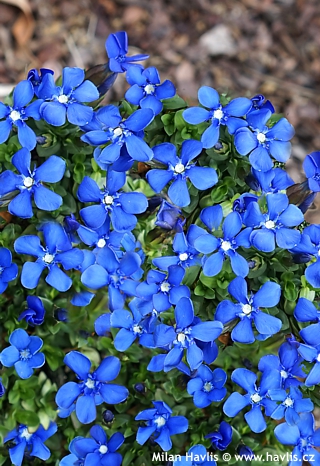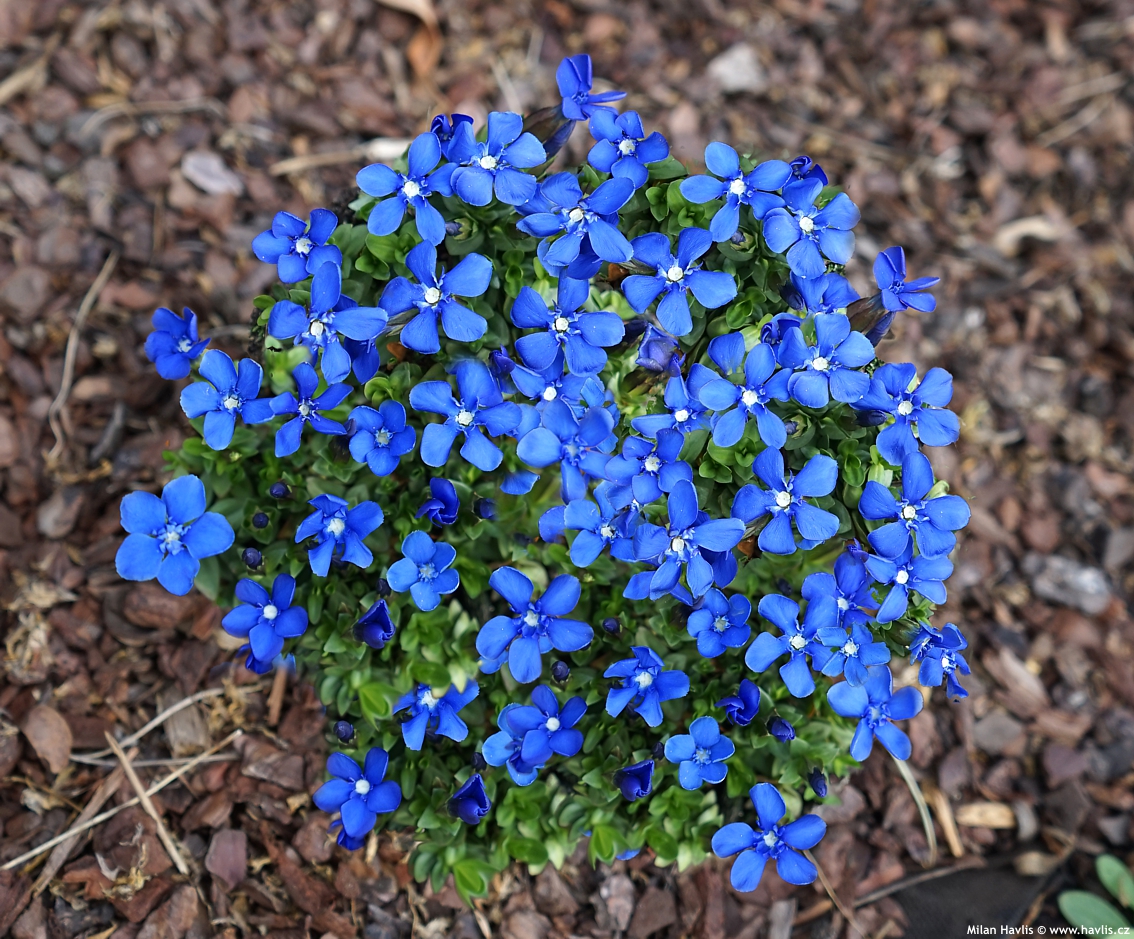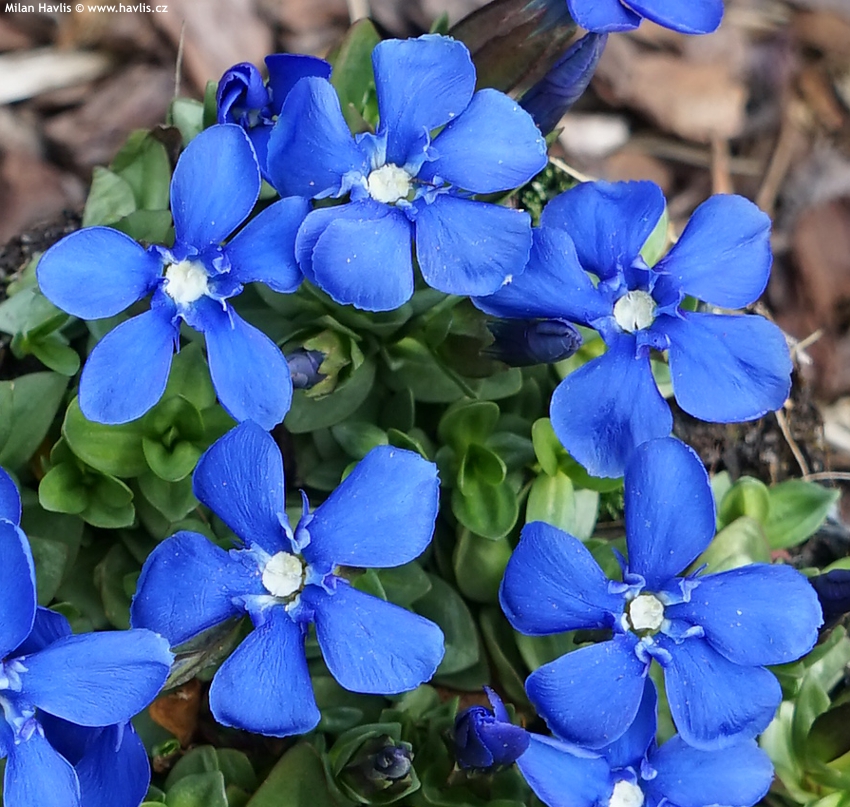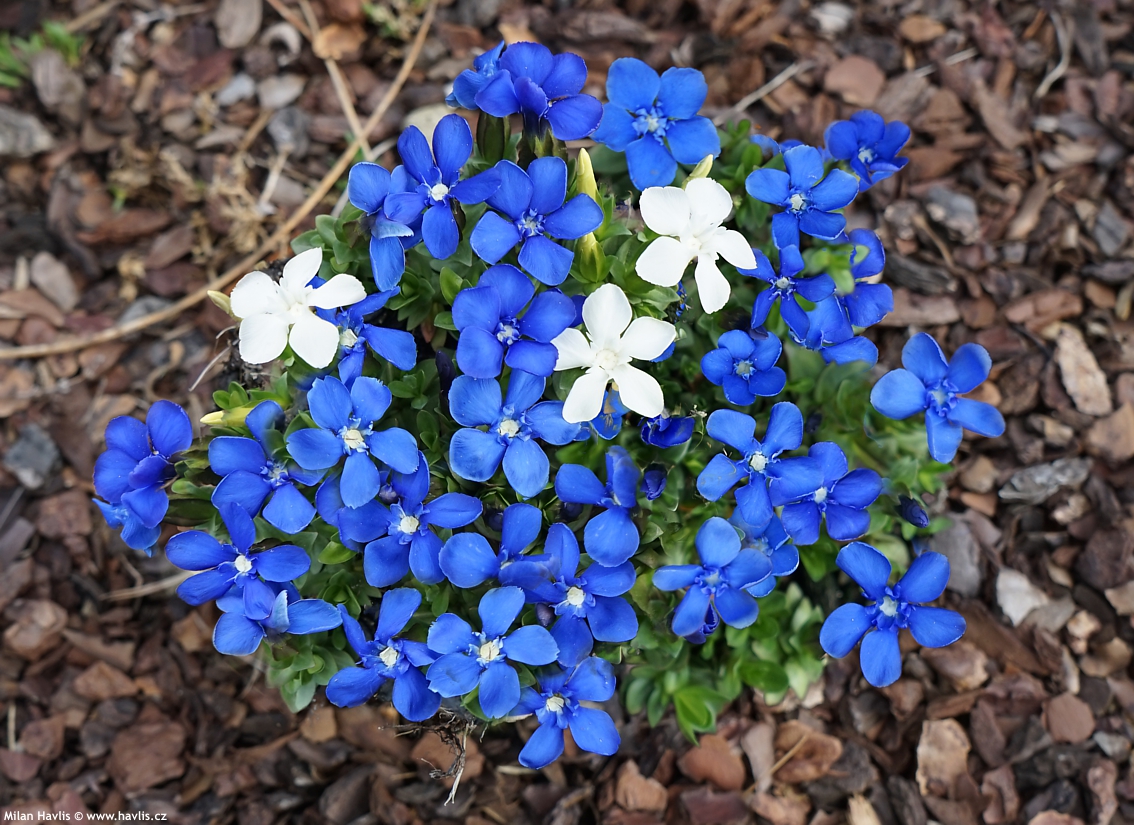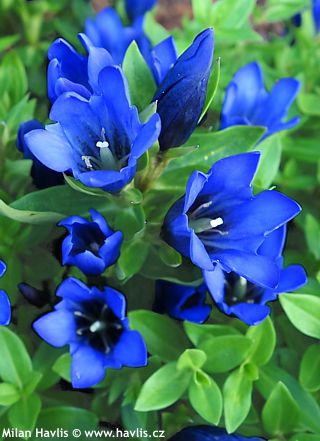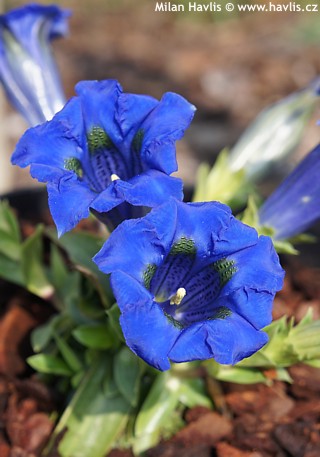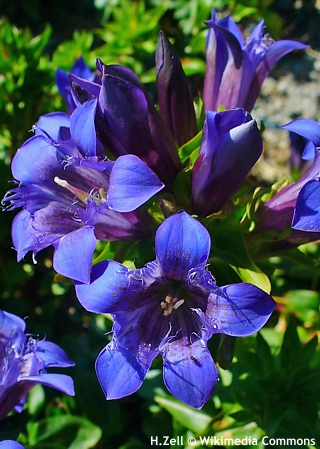Gentiana verna spring gentian
size/type
low or groundcovering,low perennial
usual height
0,1-0,1m
leaves
semi-deciduous broadleaf
colour of leaves
flowers
showy
colour of flowers
blooming time
April-May
location
full sun
soil type
neutral
soil moisture requirements
evenly moist but well-drained
USDA zone (lowest)
4 (down to -34°C)
winter protection
for zone 5+6

for zone 7

categorized
Gentiana
Gentian is one of the most beautiful perennials where the most sought-after varieties bear blue flowers. Because their blue is true blue, bluer than the ocean, darker than the summer sky, almost like indigo. The family consists of more than 400 species which often hybridize among themselves.Description of the plant:
Spring gentian is the earliest of its kind as already from late April it offers flowers its typical dark blue colour which among colour specialists and designers is known by a well-deserved name gentian blue. It is a very short-growing species forming small, cute mats of medium green leaves, above which rise 5-10 cm tall stems topped with 5-petalled, almost periwinkle-like, windmill-shaped, deep blue flowers about 2-3 cm across. An interesting thing sometimes happens when a couple of flowers turn out completely white.Its home is the whole of Europe, including the northern areas, and if you provide it with the same conditions as in the wild, it will grow well without any care. It occurs naturally in moist meadows where its rich blue flowers suddenly turn up from the midst of low grass.
Although considered an alpine plant for rockeries, it requires moisture, which is ensured by the surrounding greenery, which protects the soil from drying out with its stems and leaves. But it cannot live in constantly wet ground – it must drain well. It loves full sun where it reliably opens the flowers on a sunny day – it won’t flower in the shade or on cloudy days. Ideal soil pH is neutral and lack of nutrients can be helped by mycorrhiza (soil fungi). Hardy to about -34 °C (USDA zone 4).
Last update 03-06-2022
QUICK PRICE OVERVIEW
CURRENTLY SOLD OUT
WANT TO TRY A SIMILAR PLANT?












